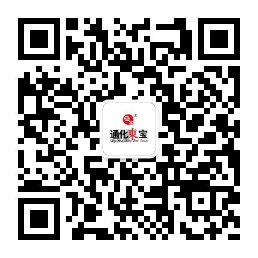Contact:
4008465777
Tonghua Dongbao's Phase I clinical trial on its URAT1 inhibitor (THDBH130 Tablets) meets primary endpoint
Dongbao Zixing (Hangzhou) Biopharmaceutical Co., Ltd., a wholly owned subsidiary of Tonghua Dongbao Pharmaceutical Co., Ltd. ("the Company" or "Tonghua Dongbao"), recently completed a Phase I pivotal clinical trial on its URAT1 inhibitor (THDBH130 Tablets) and produced a clinical trial report. The results demonstrate that the trial has reached its primary endpoint.
The Phase I clinical trial aims to evaluate the safety, tolerability, pharmacokinetics (PK) and pharmacodynamics (PD), as well as the effect of food on the aforesaid profiles, of single and multiple doses of THDBH130 Tablets in healthy adult subjects. The results show that THDBH130 Tablets have good safety and tolerability profiles, which demonstrate a dose-dependent decrease in blood uric acid concentrations with a single dose and a more significant uric acid-lowering effect with multiple doses. The PK/PD study corroborates that this product exerts its pharmacologic effects through its active pharmaceutical ingredients (APIs) in the urine and is an extracellularly-acting URAT1 inhibitor with low systemic exposure, high pharmacological activity, and better uric acid lowering effect after postprandial administration. It is expected to lower uric acid levels with milder or fewer side effects.
Based on the findings and data analysis of the Phase I clinical study, the Company has initiated the Phase IIa clinical study to evaluate the safety, tolerability, and initial efficacy of this product in Chinese adults with hyperuricemia and/or gout, as well as a patient PK/PD study.
About THDBH130 Tablets
THDBH130 Tablets are a highly active, selective, and safe inhibitor of the urate transporter (URAT1). The drug is clinically intended to treat gout and hyperuricemia by increasing uric acid excretion with a clear-cut mechanism of action, high target selectivity, low starting dose, and few side effects.
About gout and hyperuricemia
In recent years, the prevalence of gout and hyperuricemia has obviously increased in China, especially among young people, exposing the vast unmet medical needs in this field. According to the Chinese Guidelines for the Treatment of Hyperuricemia and Gout (2019), the overall prevalence of hyperuricemia and gout in China is 13.3% and 1%-3%, respectively. Gout has become the second most common metabolic disease after diabetes.
There are two main treatments for hyperuricemia and gout: inhibiting uric acid production and increasing uric acid excretion. The existing drugs on the market still have room for improvement in efficacy and safety. Among them, uricosuric drugs targeting URAT1 mainly include benzbromarone and lesinurad. According to data from Menet.com, in 2021, sales of gout drugs at public medical institutions and physical pharmacies across China totaled about RMB 1.878 billion, including about RMB 550 million for benzbromarone. Lesinurad is not yet available in China.










